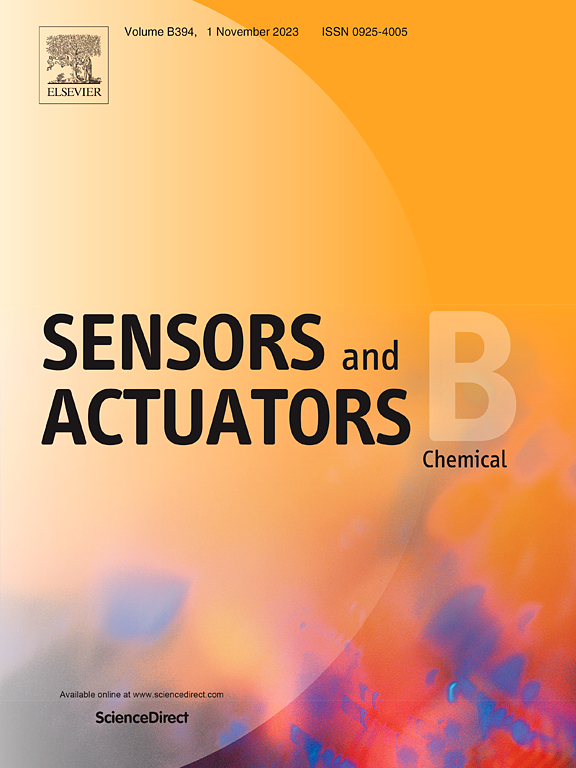侧链固定同金刚烷熔合四氢喹啉香豆素:一个强大的平台,高度光稳定的HClO探针的发展
IF 3.7
1区 化学
Q1 CHEMISTRY, ANALYTICAL
引用次数: 0
摘要
为了阐明参与各种生理或病理事件的 HClO 的深层化学生物学特性,我们非常需要能够长期连续跟踪或监测内源性 HClO 水平波动的荧光探针。遗憾的是,目前报道的大多数 HClO 探针由于光稳定性不尽人意而未能满足这一要求。在此,我们设计并合成了一系列光稳定性荧光染料,称为侧链固定的同金刚烷融合四氢喹喔啉香豆素(SFHTC1-5)。在这些染料中,SFHTC3 尤为引人注目,在 1 W 515 nm 激光源下连续照射 60 分钟后,其吸光度仍能保持 93% 以上,远远优于以光稳定性好著称的市售荧光染料罗丹明 6 G。基于这一稳健的平台,我们合理地构建了一种高光稳定性的盐酸氧化氢比率测定探针 SFHTC3-SO。值得注意的是,利用 SFHTC3-SO 对 HeLa 细胞和类风湿性关节炎小鼠模型中的 HClO 波动进行长期连续成像的研究获得了成功,凸显了该探针在潜在生物学研究中的实用性。本文章由计算机程序翻译,如有差异,请以英文原文为准。

Side-chain-fixed homoadamantane-fused tetrahydroquinoxaline coumarin: A robust platform for highly photostable HClO probe development
To elucidate the in-depth chemical biology of HClO that involved in various physiological or pathological events, fluorescent probes with the ability to continuously track or monitor the fluctuations in endogenous HClO levels over the long term are highly desirable. Unfortunately, most of the currently reported HClO probes have not answered this call due to their unsatisfactory photostability. Herein, a series of photostable fluorescent dyes termed side-chain-fixed homoadamantane-fused tetrahydroquinoxaline coumarins (SFHTC1–5), were judiciously designed and synthesized. Among these dyes, SFHTC3 was particularly attractive, which absorbance can be preserved over 93 % after 60 min of continuous irradiation under a 1 W 515 nm laser source, far outperforming rhodamine 6 G, a commercially available fluorescent dye known for its good photostability. Based on this robust platform, a highly photostable ratiometric HClO probe, SFHTC3-SO, was rationally constructed. Significantly, the use of SFHTC3-SO for long-term continuous imaging of HClO fluctuations in both HeLa cells and the rheumatoid arthritis mouse model was successfully realized, highlighting the utility of this probe for potential biological investigations.
求助全文
通过发布文献求助,成功后即可免费获取论文全文。
去求助
来源期刊

Sensors and Actuators B: Chemical
工程技术-电化学
CiteScore
14.60
自引率
11.90%
发文量
1776
审稿时长
3.2 months
期刊介绍:
Sensors & Actuators, B: Chemical is an international journal focused on the research and development of chemical transducers. It covers chemical sensors and biosensors, chemical actuators, and analytical microsystems. The journal is interdisciplinary, aiming to publish original works showcasing substantial advancements beyond the current state of the art in these fields, with practical applicability to solving meaningful analytical problems. Review articles are accepted by invitation from an Editor of the journal.
 求助内容:
求助内容: 应助结果提醒方式:
应助结果提醒方式:


